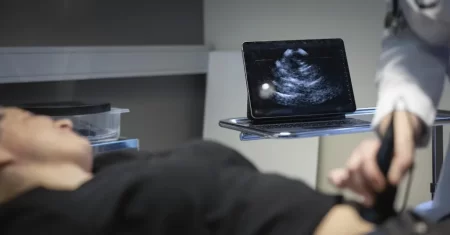Left Ovarian Cyst ICD-10: A Comprehensive Guide
Introduction
In the realm of medical coding and classification, ICD-10 plays a pivotal role in ensuring accurate and standardized documentation of various health conditions. One such condition that often requires precise coding is a left ovarian cyst. This article delves into the world of left ovarian cysts and explores the specific ICD-10 codes associated with them.
Understanding Ovarian Cysts
What Are Ovarian Cysts?
Ovarian cysts are fluid-filled sacs that can develop within or on the surface of the ovaries. These cysts can vary in size and may cause a range of symptoms or remain asymptomatic. Ovarian cysts can affect both ovaries, but for the purpose of this article, we will focus on left ovarian cysts.
Types of Ovarian Cysts
1. Functional Cysts
Functional cysts are the most common type and often result from the menstrual cycle. They include follicular cysts and corpus luteum cysts.
2. Dermoid Cysts
Dermoid cysts, also known as teratomas, contain tissues like hair, skin, and teeth. They are typically benign but may require removal if they cause discomfort.
3. Endometriomas
Endometriomas develop when endometrial tissue grows on the ovaries. These cysts can be painful and affect fertility.
4. Cystadenomas
Cystadenomas are cysts that form from cells on the surface of the ovary. They can grow quite large and may need surgical removal.
Left Ovarian Cysts: Diagnosis and Symptoms
Recognizing Left Ovarian Cysts
Diagnosing a left ovarian cyst involves a combination of medical history, physical examination, and imaging tests, such as ultrasounds or MRI scans.
Common Symptoms
Left ovarian cysts can present various symptoms, including pelvic pain, bloating, irregular menstruation, and pain during sexual intercourse.
Complications
While most ovarian cysts are benign, complications such as rupture or torsion can occur, leading to severe abdominal pain and requiring immediate medical attention.
ICD-10 Codes for Left Ovarian Cysts
Coding Overview
ICD-10 codes provide a standardized way to document medical conditions. When it comes to left ovarian cysts, it’s crucial to use the appropriate codes to ensure accurate billing and medical record keeping.
Specific Codes
For left ovarian cysts, the following ICD-10 codes are typically used:
- N83.21: Follicular cyst of left ovary
- N83.22: Corpus luteum cyst of left ovary
- N83.23: Other noninflammatory disorders of left ovary
- N83.29: Other ovarian cysts of left ovary
It’s essential for healthcare providers and coders to familiarize themselves with these codes to accurately reflect the diagnosis.
Treatment Options
Conservative Management
In many cases, left ovarian cysts do not require immediate treatment and may resolve on their own. Monitoring and follow-up with a healthcare provider are essential.
Surgical Intervention
When left ovarian cysts are large, causing severe symptoms, or suspected of being malignant, surgery may be necessary. Minimally invasive laparoscopic surgery is often the preferred approach.
Conclusion
Left ovarian cysts, while common, require accurate diagnosis and documentation. Properly coding these cysts using ICD-10 is essential for effective healthcare management. Patients and healthcare providers should work together to monitor, manage, and, if necessary, treat left ovarian cysts promptly.
FAQs
1. Are left ovarian cysts always symptomatic?
No, left ovarian cysts can be asymptomatic and discovered incidentally during routine medical exams or imaging studies.
2. Can left ovarian cysts affect fertility?
Yes, certain types of left ovarian cysts, such as endometriomas, can impact fertility. It’s important to consult a fertility specialist if fertility concerns arise.
3. Is surgery always required for left ovarian cysts?
No, surgery is not always required. Many left ovarian cysts resolve on their own or can be managed conservatively with monitoring.
4. Are left ovarian cysts cancerous?
Most left ovarian cysts are benign, but some may be cancerous. Proper diagnosis and evaluation by a healthcare professional are crucial for determining their nature.
5. How often should I have follow-up appointments for a left ovarian cyst?
The frequency of follow-up appointments depends on the size, symptoms, and type of left ovarian cyst. Your healthcare provider will advise you on the appropriate schedule.



